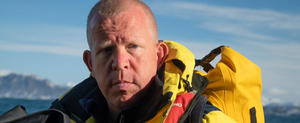
Connecting the Unreachable
The groundbreaking telemedicine research project “Connecting the Unreachable” is underway in Antarctica, achieving a major milestone in the provision of healthcare access in remote locations around the globe. Led by expedition leader Kai Müller and supported by the Institute for Remote Area Risk and Medicine (IRARAM), an expert team has been conducting the first-ever use of SpaceX‘s Starlink satellite internet for telemedicine purposes on the icy continent. The project evaluates the feasibility and effectiveness of using Starlink to enable telemedicine consultations and ICU-level data transfers. By setting up a specialized hardware configuration designed to withstand the harsh Antarctic conditions, the team seeks to demonstrate Starlink‘s potential for enhancing healthcare access even in the most remote locations on Earth. The research has profound implications for the future of telemedicine, proving the capabilities of new satellite internet options for delivering quality medical care and expertise to challenging locations and isolated communities worldwide.
Project Overview
The expedition team has set up a specialized telemedicine station on a ship travelling in Antarctica. The hardware setup utilizes Starlink terminals and dishes to connect to the low Earth orbit satellite network. The team has designed the station to be completely power-independent, with solar panels and a wind turbine providing continuous electricity even during the long polar nights. This ensures continuous internet connectivity to facilitate real-time audiovisual consultation and transmission of medical data.
Technology Setup
To ensure continuous operation of the Starlink equipment and other electronics, the project utilizes two renewable power sources - Powerfilm solar panels and a Shine wind turbine. The solar panels can charge batteries during daylight hours, while the wind turbine generates additional power around the clock from Antarctic winds.This combination of Starlink satellite equipment and renewable off-grid power sources provides a setup engineered for the challenges of Antarctica and in the future also for other remote locations, even fully without infrastructure. It enables the continuous, real-time communication necessary for evaluating Starlink‘s capabilities for telemedicine without relying on local power infrastructure or fuel-based generators.
Data Transfer
The project focuses on transferring relevant ICU-level data to an external „medical overwatch“ to optimize the use of medical resources with the expertise of professionals in secure locations. The Starlink setup allows for high-bandwidth, low-latency data transfers not previously possible in such remote environments. Specifically, the researchers are transferring the following types of data:
Vital signs from medical devices including heart rate, blood pressure, oxygen saturation, respiratory rate, and temperature. This allows constant monitoring from medical professio- nals remotely.
High-resolution ultrasound and x-ray imaging to obtain more diagnostic information and detect issues early.
Images can be quickly transferred and interpreted by radiologists around the world.
Two-way audio and video for telemedicine consultations. Doctors can visually assess patients and communicate in real- time.
Electronic health records to seamlessly share medical histories, allergies, medications and more. This prevents dangerous medical errors.
By leveraging Starlink‘s capabilities, the researchers enable real-time monitoring, rapid expert consultation, and data-driven decision making. Rather than relying solely on limited on-site medical personnel and equipment, they can tap into expansive medical resources through data sharing. This allows them to mimic an ICU environment and optimize patient outcomes even in the remotest locations on Earth. The implications are far-reaching, from expedition groups and research stations to rural communities globally as well as NGO and disaster response units that want to exchange their data with the HQ.
Vorheriger Artikel Nächster Artikel